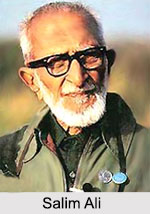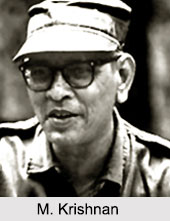 Naturalists in independent India were mostly self-trained. Naturalists are experts in natural history and hence, can contribute significantly in the conservation of Indian wildlife. After independence, the perceptions of the naturalists were crucial in the early years, in preparing a view of nature that went beyond the sights of the big game hunters` rifle. Camera became a means to record changes in the landscape, which primarily acted as a device to film tigers. The growing newspaper and magazine industry provided the active naturalists, a medium to transmit the images to an expanding audience. The roles of the naturalists in independent India pointed to the emergence of a complex middle class, which would form a major constituency for wildlife protection. The ideas of the naturalists and the responses to their efforts deeply influenced early conservation programmes in independent India.
Naturalists in independent India were mostly self-trained. Naturalists are experts in natural history and hence, can contribute significantly in the conservation of Indian wildlife. After independence, the perceptions of the naturalists were crucial in the early years, in preparing a view of nature that went beyond the sights of the big game hunters` rifle. Camera became a means to record changes in the landscape, which primarily acted as a device to film tigers. The growing newspaper and magazine industry provided the active naturalists, a medium to transmit the images to an expanding audience. The roles of the naturalists in independent India pointed to the emergence of a complex middle class, which would form a major constituency for wildlife protection. The ideas of the naturalists and the responses to their efforts deeply influenced early conservation programmes in independent India.
Emergence of Naturalists in Independent India
As per historical records, the forest department remained the key agency for protecting and exploiting the vast land under its control. A few pioneers stood out, voicing and advancing concerns about vanishing species and threatened landscapes. In the early years of independence, many naturalists became associated with a leading voluntary group namely, the Bombay Natural History Society. Founded in the late nineteenth century, the group had evolved into a body that brought together those with an interest in nature like the planters, officials, scientists, a few princes and foresters.
Different Naturalists in Independent India
 Salim Ali, Edward Pritchard Gee and M. Krishnan were among the prominent naturalists in independent India. These three naturalists knew most, if not all, about the vastness of India. None came from a princely background or from landed or feudal families. Fortunately, they were far from being penurious and had to earn a living. However, the trio stood in contrast to one another, even as they shared concerns. Salim Ali was the voice of science and Edward Pritchard Gee`s voice was that of an advisor to the official bodies. Though none exerted or held executive authority, each of them was a living testimony to the continuing engagement of a section of India`s middle class with the dilemmas of conservation.
Salim Ali, Edward Pritchard Gee and M. Krishnan were among the prominent naturalists in independent India. These three naturalists knew most, if not all, about the vastness of India. None came from a princely background or from landed or feudal families. Fortunately, they were far from being penurious and had to earn a living. However, the trio stood in contrast to one another, even as they shared concerns. Salim Ali was the voice of science and Edward Pritchard Gee`s voice was that of an advisor to the official bodies. Though none exerted or held executive authority, each of them was a living testimony to the continuing engagement of a section of India`s middle class with the dilemmas of conservation.
Contributions of Naturalists in Independent India
Naturalists in independent India brought about a cultural change in India. Salim Ali, an Indian ornithologist and naturalist, was from a well-heeled mercantile Muslim family in western India. He is also known as the birdman of India and had written a book called the Book of Indian Birds. Salim Ali played a vital role in the designation of the Bharatpur Bird Sanctuary (presently known as the Keoladeo Ghana National Park) and the Ranganathittu Bird Sanctuary. He worked with and eventually led a prominent voluntary society. Edward Pritchard Gee was a Cambridge-educated Englishman who had spent half his life in north-east India and chose to stay even after 1947. He is known to discover Gee`s golden langur. Post independence, Gee identified the dangers to endangered species and consequently framed conservation measures to preserve them. Madhaviah Krishnan is identified as a naturalist, wildlife photographer and writer. He became a full-time columnist for the popular press in the late 1940s, after a brief stint as an administrator. Based in the south Indian city of Madras (now, Chennai), he was especially knowledgeable about peninsular India. He was against the introduction of exotic trees and is credited with the declaration of Vedanthangal as a bird sanctuary. Krishnan became the receiver of Padma Shri Award in 1960 and the Jawaharlal Nehru Fellowship in 1968. Krishnan was the one who found time for landscapes and living things that others forgot to mention.



















